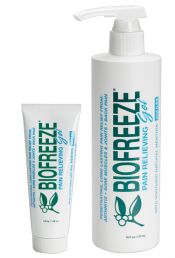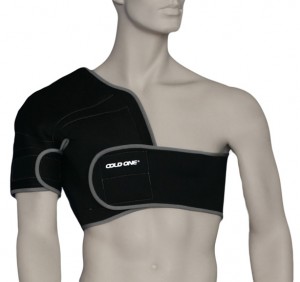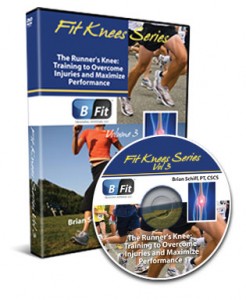Brian Schiff’s Blog
Injury Prevention, Sports Rehab & Performance Training Expert
I just recently returned from speaking at the AFPA Fitness Conference in Ocean City, MD. I gave four different talks but invariably I always end up educating fitness pros on exercise selection, modification, and progression based upon individual client response.
It is so easy in the health and fitness industry to use set protocols or schemes we are comfortable with across the board even when we know clients are unique. I have seen enough pathologic knees, shoulders, etc. over the years to know that everyone’s body reacts in its own unique way to exercise.
The primary tool we need to use to understand where a person’s body is in terms of inflammation and healing is pain. We need to educate our clients to be forthright about ongoing pain before, during and after sessions. So, what causes pain? Often it stems from inflammation.
I told the trainers this past weekend that cryotherapy will do wonders for many conditions. In fact, I see many discontinue ice after the first 2-3 days. This is a BIG mistake in my opinion. Who ever said ice will not help sub-acute or even chronic inflammation for that matter? I am adamant that clients ice in the presence of pain.
Pain is a marker and evaluative tool we need to embrace to better tweak rehab and exercise progressions. Cryotherapy is crucial in reducing persistent inflammation. I particularly like to use it immediately following workouts to reduce any new post-exercise soreness and inflammation that may creep up with higher volumes and intensities in the session.
Today, I wanted to share two of my favorite cryotherapy resources with you. You see, I want my clients to be proactive and vigilant with their own personal rehab and wellness programming. That often necessitates that they purchase tools to use at home. This way they are ready when unexpected pain or inflammation strikes.
My preferred solutions are:
- Biofreeze– a topical ointment or spray that helps reduce pain from aches/strains and joint pain. My personal massage therapist uses it and I find relief in my neck with it after each session. I carry this in my OpenSky store because it is effective. You can see more by clicking on the image below:
- Custom fit cold compression wrapsfrom Cold One – I personally own the shoulder, low back and knee wraps. These conform to your body and velcro down so you don’t have to hold them on or worry about them not hitting the right area. Click the image below for more info. You can even save 10% right now using the promo code BSCHIFF10.
I think you will find these resources useful in the recovery of musculo-skeletal pain and inflammation. While heat may be used and feels good, I prefer cold therapy to reduce pain and inflammation.
So, I have made part of my living the past several years helping people overcome shoulder pain. I often laugh when I hear people say “how hard can putting together an exercise program really be? It’s not rocket science or anything.” Well, maybe not, but getting it just right may mean the difference between a healthy shoulder and really hurting.
There is a new study soon to be released saying weight training injuries are on the rise (especially in males). In fact, injuries are up 50% from the period between 1990 and 2007. The majority of these injuries involved free weights. Many of the upper body injuries I see almost always involve the rotator cuff and/or labrum. Why? There are some primary reasons such as:
- Improper form
- Poor or absent spotting
- Exceedingly high loads in what I term the “high risk” soft tissue zones
- Too much volume/frequency
- Lack of posterior chain strength due to pressing dominance
- Too little recovery
- Pushing through pain
What most people fail to understand is that the high repetition associated with weightlifting coupled with unfavorable biomechanical stress through long lever arms leads to eventual mechanical breakdowns/failure. The basic translation = fraying, degeneration, tendinitis, tendinosis and tears.
This pattern equates to lost time in the gym and in some cases surgery. The ironic part is the damage is often done in the early lifting years but not seen or felt for a decade or two later. This is why the young twenty somethings like to debate me on the modifications I suggest for bench presses and such. Yet, read what one former power lifter recently emailed me below:
Yes you can count me as another one of your satisfied customers. I followed your 6 week injured series religiously and have recently moved on the your healthy shoulder series.
My main concern at this point is to avoid injuring the shoulder again and I will follow your advice on the 7 bonus exercises listed. My background fits the profile mentioned in your manual – 46 years old, former power lifter, injured dominant shoulder doing barbell presses about 6 months ago. I have been doing presses for over 30 years and unfortunately never read about the scapular plane.
The take home message is that modifying the load and adjusting the arc of movement with certain lifting exercises will indeed prevent common shoulder injuries and keep you in the gym for many years to come without the fear of a lifting injury.
While the hard core lifters and competitors may scoff at my application of the science and my suggestions now, they may also suddenly come to realize the potential consequences of their ways when a debilitating shoulder injury hits. Am I saying full range of motion and heavy loads are absolutely forbidden? No, but I do think you should ask yourself how often and for what purpose am I doing certain lifts in certain ranges of motion.
Additionally, I am saying that insufficient muscular balance coupled with repetitive load to near failure will over time result in acquired laxity, accelerated tendon degeneration and potential mechanical failure. Gravity and friction are two forces that will tear a shoulder down over time with exercises such as pressing, flies, dips, upright rows, side raises and push-ups to name a few.
So, the next time you feel a “twinge” in the shoulder with lifting, it may be time to consider backing off and making some changes in your routine as time and experience has taught me the rotator cuff and A-C joint will eventually say "enough is enough." If you want more information on my exercise modifications, check out my shoulder book at www.rotatorcufftraining.com.
Wow! It has been a busy two weeks for me. I have been putting the final touches on a DVD and writing a ton of articles lately. I just returned from speaking for Power Systems at a Total Training Seminar in Missouri in late March. It is always interesting speaking and hearing other presenters.
There is usually no shortage of controversy and conflicting opinions either when it comes to fitness and training. One speaker mentioned that it is perfectly okay to allow the knee to go over the toe with exercise. In fact, this presenter said it was desirable to maximize training. My talk (later on) was on bodyweight training for a healthier knee.
Naturally, I was asked what I thought about the earlier comment. My answer was “it is complicated.” I am not sure that is what the audience wanted me to say. Pressed again later on, I acknowledged that in a repetitve training environment, lunging and squatting with the knee over the toe is not something I recommend. However, if I am retraining a client to be able to descend stairs one foot over the other, the knee does in fact move beyond the toes.
So, there are times in life, where we need to think outside absolutes and adjust our thoughts and training to meet the needs of people at a current time and space so to speak. The real trick is knowing the client, their medical condition, their needs and measuring the response from the body. I hate protocols because no two people are the same, nor do their bodies heal and react the same way.
But, let’s get back to the knee. I talked about assessing the knee and then integrating the “right exercises” to not only correct dysfunction but also to improve fitness and performance. If you think body weight training is useless or for sissies, you may want to think again particularly if you like to run and have any issues with patellofemoral pain (most women do have PF pain or early arthritis).
Consider the research from the Journal of Orthopaedic and Sports Physical Therapy in 2003 where Powers et al. determined that PF joint forces are significantly greater with external loading versus bodyweight only in flexion angles begining at 45 degrees during eccentric loading (lowering down while peaking at 90 degrees) and concentric loading (rising up) at 90 and 75 degrees. What does this mean for you?
Essentially, if you are a runner and suffer from PF pain, you may want to limit deeper range of motion with squatting and/or consider limiting the amount of external loading as well. Even better, you should be doing single leg training keeping this same information in mind. Training is an exact science and most people get it wrong all the time. That is why I am currently working on a Fit Knees DVD series to give trainers and consumers relevant and science based information to direct their training for optimal health and performance.
I just finished volume three in this series and it is ready for official release this Friday. If you are a runner and want a blueprint to train for injury prevention and peak performance, this DVD is for you. Or, if you are a runner who is currently injured or has been plagued by overuse injuries, it is still for you as I have a complete progressive rehab series on the DVD to get you back up and running again.
As a runner myself, I have put these strategies to good use with much success. I thought it was fitting to relase the DVD this week as I prepare to run my 4th half marathon in Charlotte this weekend. Below you will see the product display.
As a blog subscriber or reader, I am offering you $10 off the normal price of $34.95 through midnight Saturday. Simply visit www.fitknees.com and use the copuon code BFITRUN (all caps) at checkout. I am confident you will find it valuable as it covers training from A-Z with warm-up prep, foam rolling, balance training, strength and power exercises, rehab and stretching. It is 65 minutes of power packed content. Here’s to healthier knees and happy running!
Anterior knee pain, aka chondromalacia, patellofemoral pain (PFP) and patellofemoral pain syndrome (PFPS), may be the most difficult condition to remedy in the clinic or gym. There is always debate and speculation when it comes to taping, bracing, orthotics and exercise.
In the latest edition of the JOSPT, there was a summary from the findings presented at an international retreat held in the spring of 2009 in Maryland. The publication covered the keynote addresses and podium presentations.
Before I give you the quick and dirty details, I want to emphasize a key point that was made and one I happen to wholeheartedly agree with. It is this:
When assessing and evaluating those with PFPS, it is important to recognize that these patients/clients do not necessarily fit under one broad classification system. The anterior knee pain issue is multi-factorial and not every person has the same issues or abnormalities. As such, the exercise prescription most likely will need to be tweaked accordingly for best results.
Okay, now on to the highlights that may impact your training/rehab. Some researchers from Belgium have been conducting prospective studies looking at intrinsic risk factors for developing PFPS. They looked at physical education students and novice runners. Major findings are included below:
Study #1
There were 4 variables identified as risk factors:
- Decreased flexibility of the quadriceps
- Decreased explosive strength of the quadriceps
- Altered neuromuscular coordination b/w the vastus lateralis (VL) and vastus medialis oblique (VMO)
- Hypermobility of the patella
Study #2
- More laterally directed plantar pressure distribution at initial (foot) contact during walking and more laterally directed rollover are risk factors for developing PFPS
Study #3
- Unable to link hip muscle strength (or weakness) to increasing risk for PFPS
- No apparent correlation with frontal plane motion of the knee and hip strength (so hip weakness will not automatically cause knee pain)
Finally, what does this mean for therapists and fitness pros? It means…….
- They should address the 4 intrinsic risk factors by stretching and strengthening the quads, with a particular emphasis on balancing the VMO strength in relation to VL strength. This is not new information. Spending time on closed chain terminal range strengthening is important.
- Second, keenly observing a dynamic disturbance in foot alignment at contact is important for predicting PFPS and will undoubtedly impact dynamic training protocols for the entire kinetic chain.
- Lastly, continue to strengthen the hip even though the final study revealed no apparent link. However, perhaps focus more on this when there is a definitive weakness side-to-side that has been identified. So, don’t fall back on the weak gluteus medius by default; rather use dysfunction as a driver for exercise inclusion.
PFPS is and will continue to be a difficult problem to treat and remedy with exercise. Further research is needed to determine and evaluate more specific gender differences, kinetic chain links, the efficacy of taping/bracing, and the most effective classification and treatment algorithms for those of us in the trenches. In the meantime, listen to the body and use the best available science and information to move forward with your training.
Reference: JOSPT March 2010
Well, I just finished day two of the 2nd IYCA Youth Summit. I attended last year as well. Each year I took away some new info, reinforcement about what I am currently doing along with motivation to become a better coach. Yet, the best part of attending these live events is building relationships.
I have met so many incredible coaches and people. Whether having breakfast with the likes of Kwame Brown and Carlo Alvarez or chatting with Dave Jack and Chris Mohr, I am reminded that greatness is not about ego or self seeking. Rather, greatness comes from giving, humility and most importantly “doing the right things” for our clients.
What does this look like in my fitness and sports performance business? Well, it involves the following:
- Putting 100% of my passion into products, training and consulting
- Assessing the needs, abilities and goals of my clients
- Constantly re-assessing to “tweak” programming and exercise prescription
- Being willing to admit when you are wrong or change the way you do or see things when it is in the best interests of the client
- Continually learning and striving to get better each day
- Delivering results through sound evidenced based training (knowing “why” I do what I do)
- Being honest and dedicated to improving the lives of my clients
So, you may be asking why I am telling you all this. I have a simple answer. I want you to trust me and look to me as a credible expert when it comes to corrective exercise, rehab and sports performance. I also want to assure you it really is the proper application of knowledge that defines success with exercise. It is an exact science.
The types of exercise, reps, sets and such really do matter. See what one client recently said about my shoulder rehab program:
I began using your exercises immediately. In just 6 days I have seen significant change. I have been able to use my hamd/arm again to wash my hair, close my car door, reach for items and just stop holding it up and against my body. Today I had a weekly massage (she was formerly a PT) and she was amazed at my progress. I feel there is hope again. I know the book cost a fee, but I still want to say thank you for creating an exercise plan that does not include torture.
Wow, torture is never good, right? Exercise should never be painful – just effective. If you have not seen significant positive change within 30 days, this should raise a red flag. So, beware of ultra hype and too good to be true claims, yet understand that you should see some measurable results in a reasonable time frame. I will always stand behind my programs and products.
With that said, I will be revealing a series of specific exercises I use with my clients over the next month. In these posts, I will show you the exercise, explain the applications and reveal the training tools I use to make them work. The posts will give you real exercises you can use to fix muscular imbalances, improve strength and maximize physical health and performance. Most importantly, you can rest assured I remain 100% committed to doing things the “right way.”




